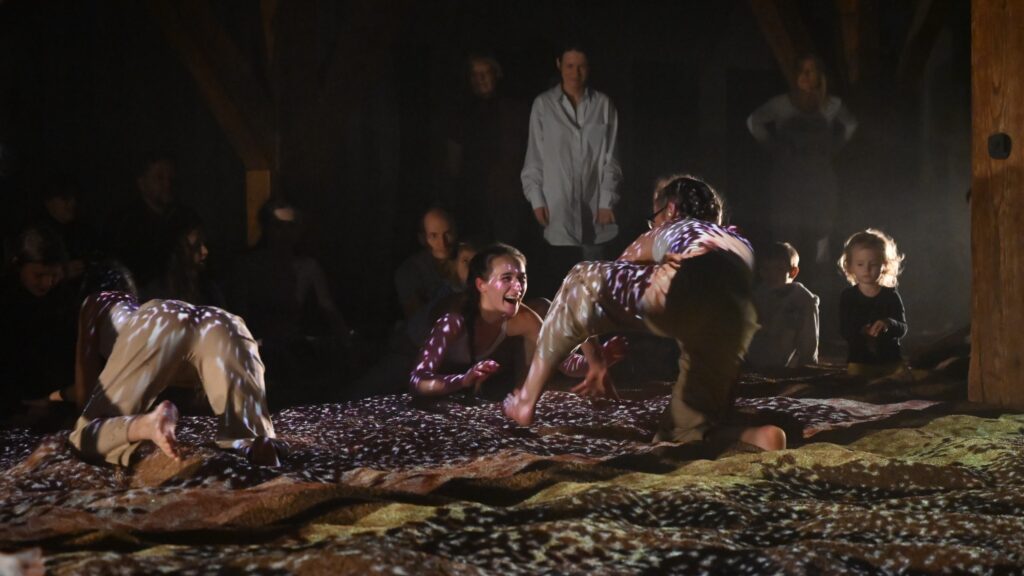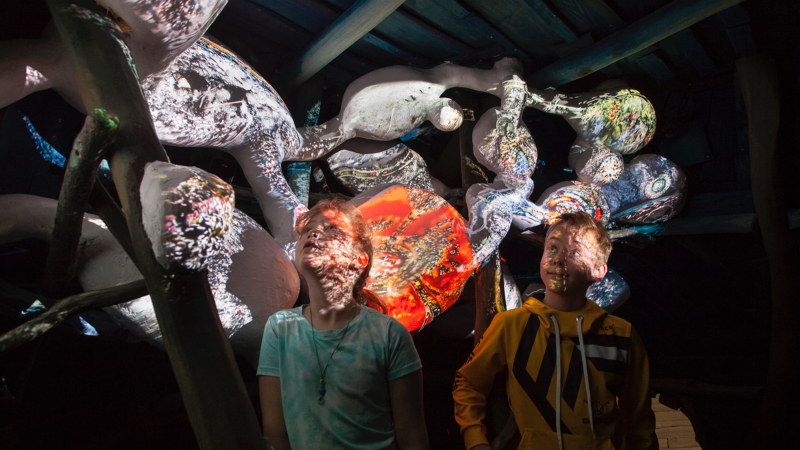NEB ambition
The ultimate ambition of the New European Bauhaus is to achieve transformation. To do this, the NEB Compass has identified specific levels of ambition that outline the desired outcomes for each of the NEB values.
The ultimate ambition of the New European Bauhaus is to achieve transformation. To do this, the NEB Compass has identified specific levels of ambition that outline the desired outcomes for each of the NEB values.
These areas refer to the five key domains of intervention that CrAFt's New European Bauhaus Impact Model considers essential for guiding and evaluating complex urban initiatives.
The participation level refers to the degree or extent to which individuals or groups are actively involved or engaged in a particular activity, project, or process. It assesses the depth of their involvement, contributions, and commitment, ranging from minimal or passive participation to active and dedicated participation.
The New European Bauhaus (NEB) aims to promote the values of sustainability, aesthetics, and inclusion in the design and transformation of urban spaces. It emphasises the integration of environmental, social, and economic considerations to create harmonious and innovative living environments.
According to the Smart City Guidance Package, there are seven stages to plan and implement smart city projects. These stages propose a logical and coherent roadmap for city initiatives involving many stakeholders.
Cultural centre Sladovna Písek, Czech Republic, is in a 2,500 sqm, seven-floor building. It offers permanent and temporary exhibitions and theatrical and learning experiences for children and adults. The main principle of their activities is pretty simple: Children and their caretakers leave their daily lives behind for a few hours and become protagonists in stimulating stories. They must be active, help one another, make decisions and be responsible for their behaviour.
With this formula, Sladovna Písek has become a successful cultural institution that promotes participation and environmental consciousness through art and creativity. To learn more about Sladovna, we met Adam Langer, who currently serves as the centre’s director. In his role, Adam wears multiple hats. He is not only the director but also the dramaturgist and exhibition planner. He passionately prepares and curates programmes, often collaborating with others to bring dynamic cultural experiences to life.
Despite his academic background in economics, Adam’s professional path is deeply rooted in the arts. He enriched his expertise through numerous European artistic residency programmes, including Erasmus exchanges and independent residencies.
Adam’s transition into the theatre sector became more pronounced when he began working at Sladovna Písek. Initially starting in production, he eventually became the director. His background in economics and law provided a solid foundation for managing the logistical and administrative aspects of the cultural centre.
Simultaneously, his artistic inclinations enabled him to excel in creating and curating engaging programmes and exhibitions for children and adults. This unique combination of skills allowed Adam to thrive in his role, bringing a balanced approach to both the creative and operational aspects of his work.
Adam’s professional motivation is deeply rooted in the impact of his work on children and the community. He is enthusiastic about combining art and education to provide children with enriching experiences. He finds great fulfilment in witnessing how the exhibitions and programs at Sladovna Písek touch the hearts and minds of young visitors, often sparking their curiosity and creativity.
As a cultural centre, Sladovna Písek seeks to inspire curiosity, creativity, and a deeper understanding of the interconnectedness of art, nature, and history. Sladovna Písek’s activities emphasise active participation, community involvement, and site-specific interventions.
The centre’s activities are designed to be immersive and educational, offering children unique experiences that broaden their perspectives and ignite their imaginations. The centre fosters a sense of community and collective creativity by inviting local and international artists, educators, and residents to collaborate.

Sladovna Písek’s activities resonate with the New European Bauhaus principles by combining participatory methodologies, artistic creativity, and sustainability education. The centre’s focus on interactive, experience-based learning ensures that these principles are taught and lived through practical, engaging activities.
Sladovna Písek acts as a training ground where children learn to think creatively, participate actively, and care for their environment, embodying the holistic approach envisioned by the New European Bauhaus. Here’s how, in Adam’s view, the organisation embodies these principles:
Sladovna Písek is also connected to the Hands-On! Association, which promotes interactive and engaging museum experiences. The centre’s adherence to the “Homes of 21st Century Education” certification criteria reflects its commitment to maintaining high standards in participatory, creative, and educational practices. This certification, which needs to be renewed every two years, ensures that Sladovna Písek continually evolves and adapts to meet the changing needs of its audience while adhering to its core principles.
Sladovna Písek’s transformation into a vibrant cultural centre began with the extensive renovation of an old malt factory. The reconstruction project started around 2000 and took over a decade due to the building’s size and complexity. Initially, there was no clear concept of what Sladovna would become. The first phase saw only 35% of the building refurbished, and it briefly housed the “House of Czech Kids’ Illustration,” featuring two exhibitions. However, this initial effort faced significant challenges, including funding issues and low visitor numbers, resulting in a period of instability with five directors in as many years.

The turning point for Sladovna came when Teresa Dobejářová became the director. She introduced the “Gallery to Play” concept, inspired by the successful children’s museums and galleries in Germany, Austria, France, and the Netherlands. This vision proposed transforming Sladovna into an interactive, participatory space where children could engage with art and creativity hands-on. The municipality accepted this idea over an alternative proposal to convert the building into a hotel, marking a decisive moment in Sladovna’s history.
Under Teresa’s leadership, the “Gallery to Play” concept began modestly with simple exhibitions but quickly gained traction. Visitor numbers started to double each year, validating the interactive approach. This success led to the second reconstruction phase, further expanding the facility’s capacity and capabilities.
Adam joined Sladovna during Teresa’s tenure, initially working in production and exhibition development. When Teresa decided to leave, Adam took over as director following an open call. Over the past seven years, his contributions have significantly evolved Sladovna’s concept and operations. Adam has emphasised a participatory and theatrical approach, enhancing the visitor experience through interactive and immersive exhibitions.
Sladovna Písek’s journey from a partially renovated malt factory to a thriving cultural centre shows the importance of visionary leadership and innovative thinking. The evolution from a traditional exhibition space to an interactive “Gallery to Play” has transformed Sladovna into a participatory, creative, and sustainable cultural engagement model. Here are some of the ingredients that Adam has added to the recipe in the last few years:
Through the years, Sladovna has transformed into a cultural and artistic hub, significantly impacting the local community. Introducing participatory festivals has fostered collaboration between local and international artists, enriching the city’s cultural landscape.
With 50,000 visitors annually to a city with a population of 30,000, figures confirm Sladovna Písek’s success in increasing its visibility. This influx has instilled a sense of pride among locals and elevated the city’s cultural standing.

Sladovna’s approach has influenced local education systems, encouraging more interactive and participatory teaching methods. This has resulted in teachers recognising the potential of students who might otherwise be overlooked. Teachers and students now approach Sladovna enthusiastically, knowing they can expect a creative and engaging experience, and that their work can be combined with and inspired by Sladovna Písek’s.
The institution has had a lasting impact on generations of Písek residents. Stories from locals—like young people who grew up participating in Sladovna Písek’s activities and are now seeking employment there—highlight how Sladovna’s activities have shaped the new generation’s personal development and career aspirations. According to Adam, Sladova Písek fosters a mindset that balances global awareness with local action. The centre equips future generations to address both local issues and global challenges.
Adam’s vision for Písek’s future, shaped by Sladovna Písek’s contributions, is one where empowered, responsible, and active citizens work collaboratively to improve their community. This vision aligns with the educational and participatory values promoted by Sladovna, ensuring that the institution’s impact is felt for generations to come.
Written by Jose Rodriguez